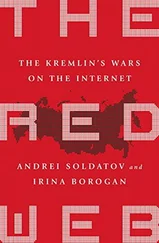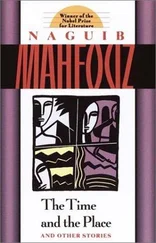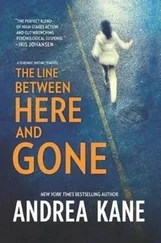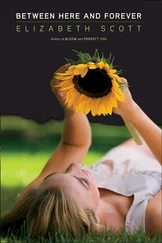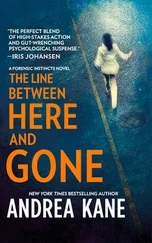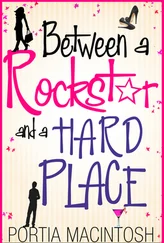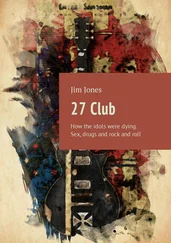But presently, that correlation is gone. With fatigue causing so many clipped thoughts, things seem to take longer than they actually do. I’m having a difficult time understanding why only two minutes have passed, according to my watch, when it feels like ten. Another bout of paranoia strikes me, and I clutch tight the idea that my watch was damaged in the chockstone accident and is no longer truthfully telling the time. Maybe it’s closer to dawn than I had figured; maybe it’s even a day further along. (Or maybe I’m completely unhinged.) It takes me awhile to deduce that my Suunto is functioning just fine-how else could it predict the coming of dawn, the daily appearance of the raven and the sun dagger, and the fall of night so accurately? OK, OK, so it really is only one-thirty A.M.
I have a half hour till my next sip of urine. At least the piss is chilled now; I’m glad for that. But I’m even happier for the beverage memories that mesmerize me from time to time, complete with lifelike projections.
I close my eyes, and I am an eight-year-old sitting on the back porch of my grandparents’ house in the central Ohio countryside, playing gin rummy with my grandpa Ralston. We beat the heat with a 7-UP, poured from a refrigerated two-liter bottle into a white Styrofoam cup with five cylindrical ice cubes, the carbonation tickling my nose as I lift the cup for a sip. Just as I can taste the clear sweetness, the memory changes to a vision, and there in front of me is the Styrofoam cup in a halo of light, glowing like the Holy Grail, atomized fizz popping up over the cup lip in the backlighting. I shiver and open my eyes, and though the inside of my rope bag is perfectly dark, the vision blinks out.
Again I shut my eyes, and it is a late-summer afternoon in 1987. Deep in a childhood memory, I am taking a break from baling hay with family friends on a rolling green hillside field in eastern Ohio. The view to the north is open and lush; a pocket of uncleared forest cuts the southern horizon two hundred yards away. We are sitting on the rear of the baling trailer’s bed, taking turns chugging ice-cold sun tea thick with sugar from a red and white thermos. When the jug comes to me, I raise it up, and condensation drips onto my cheeks from the lid. I pause to wipe the humidity away from my eyes, then I shudder and lose the vision before I can gulp down any of the syrupy tea.
A serial succession of visions takes me around the world and traverses most of my life. I take my first sip of beer from a pull-tab can of Budweiser on my family’s back porch with my dad and uncle in 1985. I drink warm sake with my friends Jon, Erik, Moody, and Chrystie in our hotel room in downtown Nagoya, Japan, before a Phish show in June 2000. I sip on a double-length straw stuck in a Slurpee wedged in the triangular hole in the handlebars of my bike as I ride back from a 7-Eleven near my parents’ house in suburban Denver, on a July afternoon in 1991, before I had my driver’s license.
One beverage in particular surfaces repeatedly in my mind, its salted rim cloaking the sweet taste of a blended mixture of ice, tequila, triple sec, and lime. I imagine that I’m slobbering over myself, foaming at the mouth in lust for a margarita, but my tongue adheres to my cotton-dry palate. My breath rasps through my desiccated throat, and I wheeze then choke on my vocal cords, and I am reminded of a fact that the beverage memories have pushed aside: I am dying.
At three A.M. I apply more lip balm to my lips, hoping to seal in any last moisture they might have, and it occurs to me that I might likewise be successful in sealing my tongue. Painting the petroleum wand across my tongue makes me salivate, and I suck on the lip balm, curious about its caloric content. If it gets my body excited for food, maybe it will be worth a shot to eat some of it. I bite off a small hunk, about a tenth of the total stick, and mush it around in my mouth. It coats my teeth and my tongue, and minute amounts of saliva ooze through the layer of tasteless jelly. The resulting goo gobs up around my molars, and I decide not to swallow it. The fact that I am still producing saliva encourages me; I’m not yet into the most severe stages of dehydration. Aside from that inferred conclusion, I gain nothing from the effort. My hunger remains unabated.
Without physical activity to keep me busy, I spend cold hours recounting dozens of my favorite trips with family and friends. From Japan to Peru to Europe, from Alaska to Florida to Hawaii, from climbing mountains to seeing our favorite bands, I call up my fondest memories. I have fulfilled my purpose in life by exploring so much of the world, bringing myself happiness and inspiring others with my adventures. I have met my calling at every opportunity and lived an intense and dramatic life.
Still, I’m not ready to die. I drop into a series of trances. In one, an unidentified male friend appears in front of the chockstone wearing a heavenly white robe, and soundlessly beckons for me to follow him. We turn to the wall of the canyon, just to the left of the ledge where my rope anchor is set. I press on a panel of sandstone, and the wall hinges back on itself, swinging open to the right. We leave together, him first, walking through the door frame that has miraculously appeared, and we step from the sandy canyon bottom into a carpeted hallway in a house. My friend leads me into a living room that is full of more of my friends relaxing on couches and easy chairs. I feel an immediate surge of cheerfulness, as if I’ve arrived home after an extended journey. I still can’t distinguish the friends, but they chat together like we’re at a dinner party, the voices murmuring and swooshing in my ears at an indecipherable level.
I stand in the doorway, feeling at ease, but I cannot engage anyone. They exist on a different plane, and though we can see each other, I am different-somehow, they aren’t real. My friends look up from their conversations as if to let me know they heard me think that and respond in unified thought, “We’re here when you need us. When you are ready, then we will be real.”
I’m affronted. “What’s going on? What’s happening to me here? Am I inside my head? Am I dreaming? How can that be, if I’m not sleeping? But how is this possible if it’s not a dream?” I debate whether or not I’m sleeping. I’m pretty sure I don’t lose consciousness or fall asleep during these episodes. My muscle control seems to stay intact, because otherwise my body would recoil from the violent pain of the weight on my right wrist. No, this mental retreat center is someplace more abstract than my everyday consciousness, but it’s not exactly a dreamworld, either. Somehow, I am maintaining my body in the canyon while simultaneously departing it.
Most of all, I clamor for some verification of what is real, but before I can reach a decision, my mind forgoes the questions it has just asked. My senses are feeding me realistic information that this trance world does in fact exist. I can reach and touch the walls and furniture in this roomful of friends. I can smell the scented candles burning on the end table. I feel the breeze when someone opens the sliding glass door to the patio and walks outside. While much of the atmosphere presents itself convincingly, it is as though I am watching from the dark side of a one-way mirror. There is action, but I can’t participate in it. I find I am no longer moving anything other than my head and arms; my legs have locked at the knees. And that business with the canyon wall opening up? That’s just crazy.
Eventually, I come back into my body, predictably finding my core convulsing in cold spasms. I spend another hour fidgeting with my wrappings and the rope bag before I leave the canyon again, but this time I follow a friend whom I identify at first glance. It is my best friend from high school, Jon Heinrich, and I watch my spirit float up out of my cloaked back and head inside the rope bag. We walk through the hinged canyon panel as I’ve done twice already, and we enter a small, dark, tightly packed square room with barely enough space for the two of us to stand without bumping into each other. The room is pitch-black except for a line of bright light reflecting off the unpolished concrete floor. Jon has apparently misplaced the key that presumably would open the door. He flicks on a light switch, and thin metal shelves full of cleaning supplies appear on three sides of us, an industrial mop sink in the corner to my left. We’re in a janitor’s closet. Somehow I know it is located in a hospital, as opposed to an office building or a school, and my hopes dart wildly.
Читать дальше

